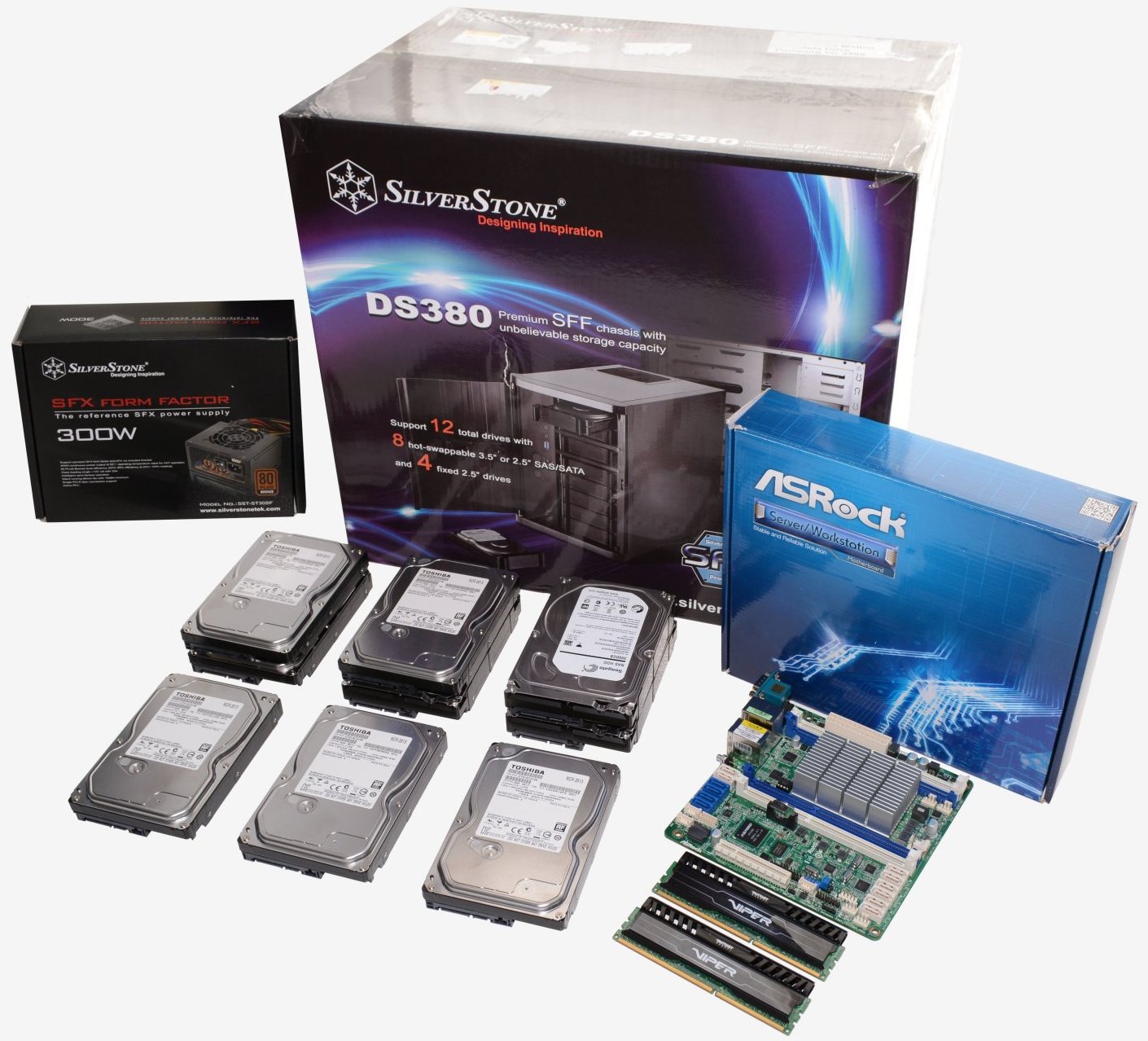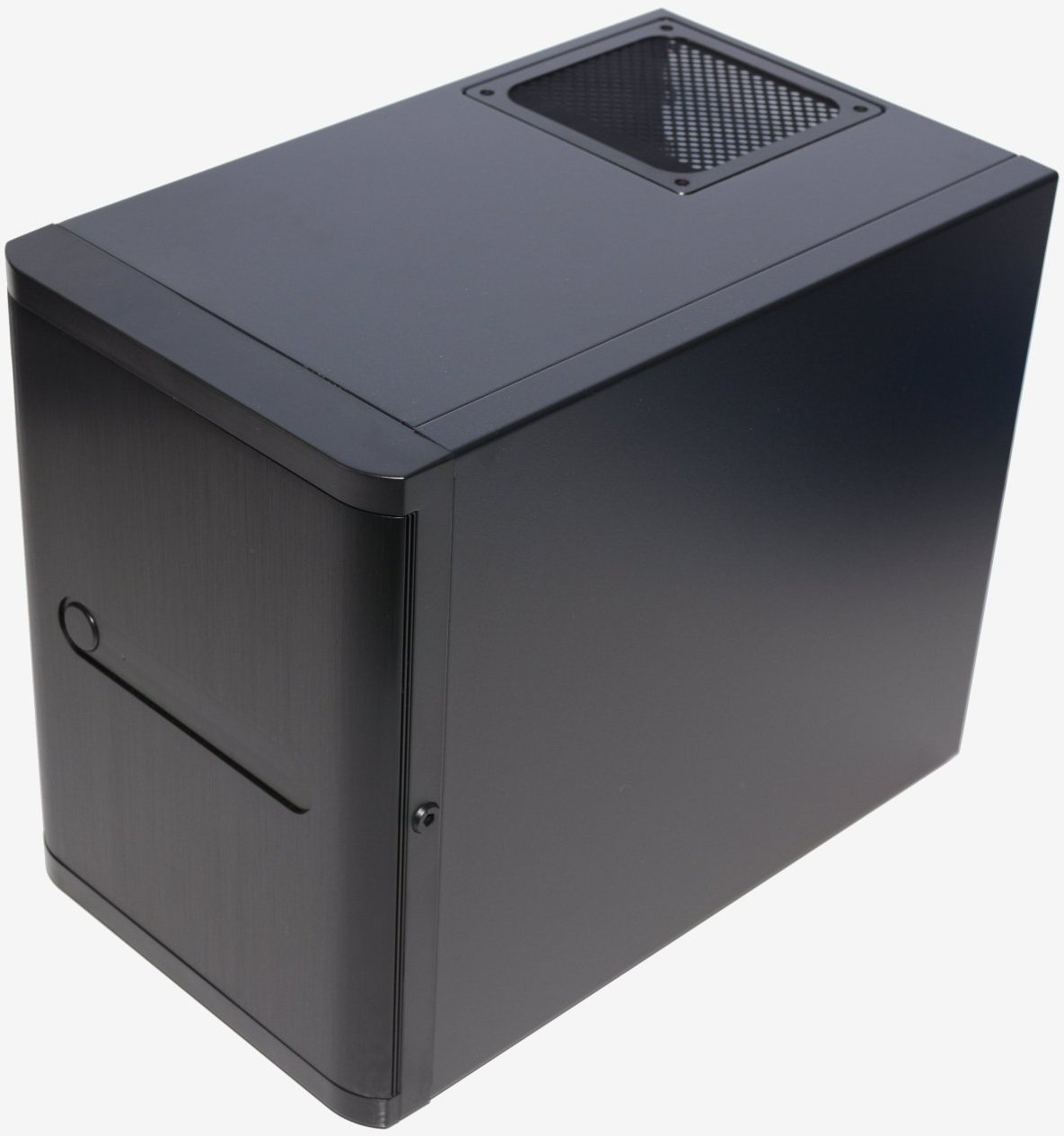While more common today than ever, network-attached storage (NAS) devices aren't quite mainstream yet. Although Synology and QNAP have become recognized brands with products ranging from $150 to $3,000, the lower end of that bracket will only get you a sluggish single-bay model and if you want four bays or more – as most of you likely do – we're talking north of $500. Mind you, that's before installing hard drives.
Naturally, that cash buys a purpose-built box which installs fast, runs quiet, sips power and saves space, at least compared to repurposing an old PC, yet the inner DIYer in us is itching to build a NAS. Going that route seems like an easy way to save some cash considering a small desktop could be used as a four or eight-bay server, and there is plenty to value in the extra flexibility and expansion of a custom setup.
Assembling your own NAS would net more performance as well because you'd be using a Celeron or Pentium over the Atom or other SoCs, while power shouldn't be a concern with Haswell using less than 30 watts at idle. As the cherry on top, open source software such as FreeNAS and enclosures like Silverstone's DS380 should make it less daunting to get started with your homebrewed eight-bay NAS server.
Silverstone's latest chassis is unlike anything we have seen. Although it's still a computer case, it isn't designed for gaming or even workstations. The DS380 is aimed directly at users who are building their own NAS.
The body of the Silverstone DS380 has been constructed of steel, while only the front door is made of aluminum. It measures 211mm wide, 285mm tall and 360mm long, giving it a 21.6L capacity. Although this is quite large compared to eight-bay models from QNAP and Synology, keep in mind they feature custom-built motherboards that take up considerably less space.
The DS380 comes exclusively in black with a brushed aluminum front door that opens to expose the eight 3.5" hot-swappable drive bays.
Also behind the door are two audio jacks (not sure why those are needed) and a pair of USB 3.0 ports. While the audio jacks seem useless on this product the USB ports aren't as they can be used to quickly access and share data from external devices.
The all-important power button is found here along with the reset button, though for a NAS you might not want to plug the reset button in.
Oddly the drive cages are broken up by a divider on the third cage from the top – not a big deal, just not sure why Silverstone did that. It is easy to look past that quirk, but the drive cages themselves are a bit disappointing.
We were bummed to find that the drive cages are not tool-less like those now used by Synology so the user must secure each drive using four screws. While that might seem like a minor inconvenience, it gets annoying fast when swapping drives in and out.
Thankfully the drive cages themselves are easy to remove using the squeeze and pull method, still not nearly as elaborate as what you will find from Synology, QNAP or even Thecus, but they do the job.
Where the Silverstone DS380 does excel is cooling. Whereas we are used to finding one or two exhaust fans, the DS380 has a more advanced setup. In the left side of the case there are a pair of 120mm in-take fans covered by a magnetic dust filter. Then at the rear we have a third 120mm fan serving as the case exhaust. It's a nice dust free setup that should keep the drives inside clean and cool.
Around the back, the case isn't painted but it does have room for a top mounted SFX power supply that also features external ventilation complete with another magnetic dust filter. Below the PSU are two external expansion card slots and room for the motherboards I/O panel, which is adjacent to the 120mm fan and grill.






